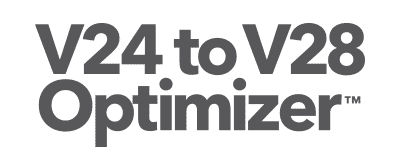Our Take On Dr. Scott Gottlieb’s Op-ed on AI and Physician Roles
by Dr. Seth Flam, CEO of ForeSee Medical
In a recent op-ed about AI, Dr. Scott Gottlieb examined the impact of artificial intelligence on the roles of physicians, both today and in the future. Dr. Gottlieb is a contributor to CNBC, serves on the boards of Pfizer and Illumina, and was the Commissioner of the FDA during the Trump administration. We thought it would be insightful to use his recent publication as a template to explore how ForeSee Medical employs AI and to consider whether large language models may impact the ForeSee Medical application.
Machine Learning
The most commonly used example involves utilizing carefully designed algorithms to teach a machine to interpret radiology images. In this case, the machine may be 'fed' thousands of radiology images that have already been interpreted by a radiologist, and, using labeling and medical algorithms, the machine learns to read images. When presented with new images, the machine can extrapolate from its training and interpret the image successfully. This type of machine learning is already employed by some radiology groups. When used to make diagnoses, these machine learning models could be classified as 'medical devices' and might require regulation by the FDA.
At ForeSee Medical, we utilize machine learning to train specific models for interpreting certain types of phrases or temporal relationships, enhancing our understanding of clinical notes.
Definition:
An AI technique that teaches computers to learn from experience.
Natural Language Processing
ForeSee Medical uses Natural Language Processing (NLP) to read the unstructured data in clinical notes and then codifies that data so it can be stored in a database. When paired with the ForeSee Medical rules engine, the system generates evidence-based decision support.
New Large Language Models, such as ChatGPT, are currently being developed to provide clinical decision support in specific specialties like oncology. Doctors may find these models appealing as they can scour millions of pages of clinical data and publications to assist in making more informed clinical decisions.
For the Medicare Risk Adjustment model, combining NLP with Rules is currently more efficient than using Large Language Models. Regardless, when these software programs provide clinical decision support, they are not classified as 'medical devices' and, therefore, do not require regulation by the FDA.
Definition:
A machine technology that gives computers the ability to interpret human language.
Large Language Models
Dr. Gottlieb refers to this model as the 'holy grail'—a software program that could operate fully automated, parsing the entirety of a patient's medical record to diagnose conditions and prescribe treatments directly to the patient, without a physician in the loop. I am not so sure.
There is no regulatory path for this type of model, nor is there evidence that the necessary datasets are available to train such a model and prove its efficacy.
Large language models are more likely to enhance physician productivity than to replace providers. Software is far from being a substitute for medical providers, which is probably advantageous, although it may have a less dramatic impact on the cost of physician care.
The choice of model fundamentally relates to the goals of the user; not every model is the right one for every problem space. Great software companies will utilize the best model to address the challenges facing their users. To reiterate, we do not anticipate a scenario where AI replaces physicians, and ForeSee Medical software does not aim to replace coders or physicians either; instead, we aim to enhance their efficiency. Put simply, we improve accuracy and reduce the hassle associated with risk adjustment coding.
At present, I am confident that ForeSee Medical is utilizing AI techniques that provide state-of-the-art risk adjustment decision support. We have a Large Language Model workgroup comprised of AI experts who monitor the evolution of emerging AI technologies. Currently, our accuracy rates are nearing 100%, and we are continually improving.
Definition:
A computational model that processes and generates human-like text based on vast amounts of textual data.
ForeSee ESP software aids your organization in perfecting your RAF scores and amplifies HCC coding productivity five to tenfold. Nearly all our clients experience double-digit ROI, and our application integrates seamlessly with your EHR.
Look for our V24 to V28 optimizer – the key to unlocking best practices for working with the dual model over the next two years.






